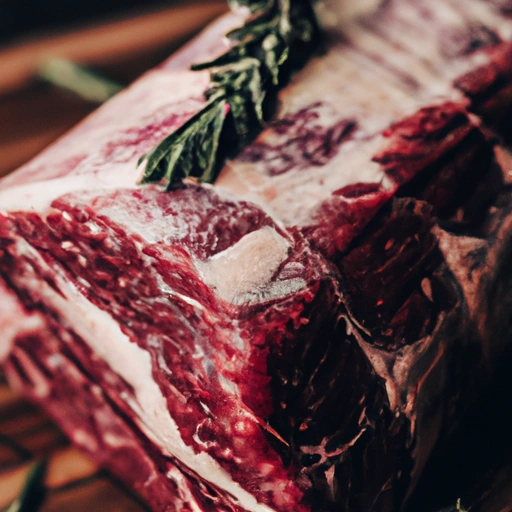Meat
Description

Meat is a staple food ingredient derived from the tissues of animals, primarily mammals and birds. It is consumed worldwide and plays a central role in various culinary traditions. Meat is rich in protein and comes in multiple forms, including beef, pork, lamb, poultry, and game, each with distinctive flavors and textures. It is measured in ounces (oz) or grams (g) and pounds (lb) or kilograms (kg), catering to both American and European units commonly used in food recipes.
Common uses
Meat is used in a wide array of dishes from simple home cooking to gourmet preparations. It can be eaten alone as a main course, incorporated into stews, soups, and sauces, or used as a filling for pastries, sandwiches, and wraps. Its versatility makes it a popular choice for protein in meals.
Nutritional value
Calories
Calories in meat vary depending on the cut and species, with leaner cuts containing fewer calories and fattier cuts being more calorific. For example, 100 grams of cooked lean beef contains approximately 250 calories.
Protein
Meat is an excellent source of high-quality protein, essential for muscle repair and growth. A 3-ounce (85 grams) serving of cooked beef can provide about 22 grams of protein.
Fat
The fat content in meat also varies, with certain cuts like ribeye being higher in fat compared to sirloin or tenderloin. A 3-ounce piece of cooked beef may contain between 5 to 20 grams of fat, based on the cut and preparation.
Carbohydrates
Meat is naturally low in carbohydrates, with most types containing none whatsoever. Thus, it is often included in low-carb diets.
Vitamins
Meat is a source of B-complex vitamins, particularly B12, which is not found naturally in plant foods and is crucial for the nervous system and blood formation.
Minerals
It provides important minerals such as iron, which helps transport oxygen in the blood; zinc, important for the immune system; and selenium, an antioxidant.
Health benefits
When consumed in moderation as part of a balanced diet, meat can contribute to muscle maintenance and repair, support immune function, and promote overall health due to its protein, vitamin, and mineral content.
Potential risks
However, excessive consumption of red and processed meats has been linked to increased risk of heart disease, certain cancers, and other health issues. It is recommended to enjoy meat in moderation and to opt for leaner cuts to minimize potential health risks.
Common recipes
Meat is featured in numerous recipes, from the American hamburger and the European beef bourguignon to Asian stir-fries and Middle Eastern kebabs.
Cooking methods
It can be grilled, roasted, broiled, pan-fried, stewed, or slow-cooked, providing a vast range of textures and flavors to cater to different palates.
Pairing with other ingredients
Meat pairs well with a variety of ingredients, including vegetables, grains, and legumes, and it can be complemented with an assortment of spices, herbs, and sauces to enhance its natural taste.
Summary
In conclusion, meat is a versatile and nutrient-rich ingredient that has been a part of human diets for millennia. With its vast array of types and cuts, it offers endless culinary possibilities. While it brings health benefits, it is important to consume it responsibly to mitigate potential risks. Meat continues to be celebrated in kitchens around the world, uniting cultures and traditions through shared meals and recipes.